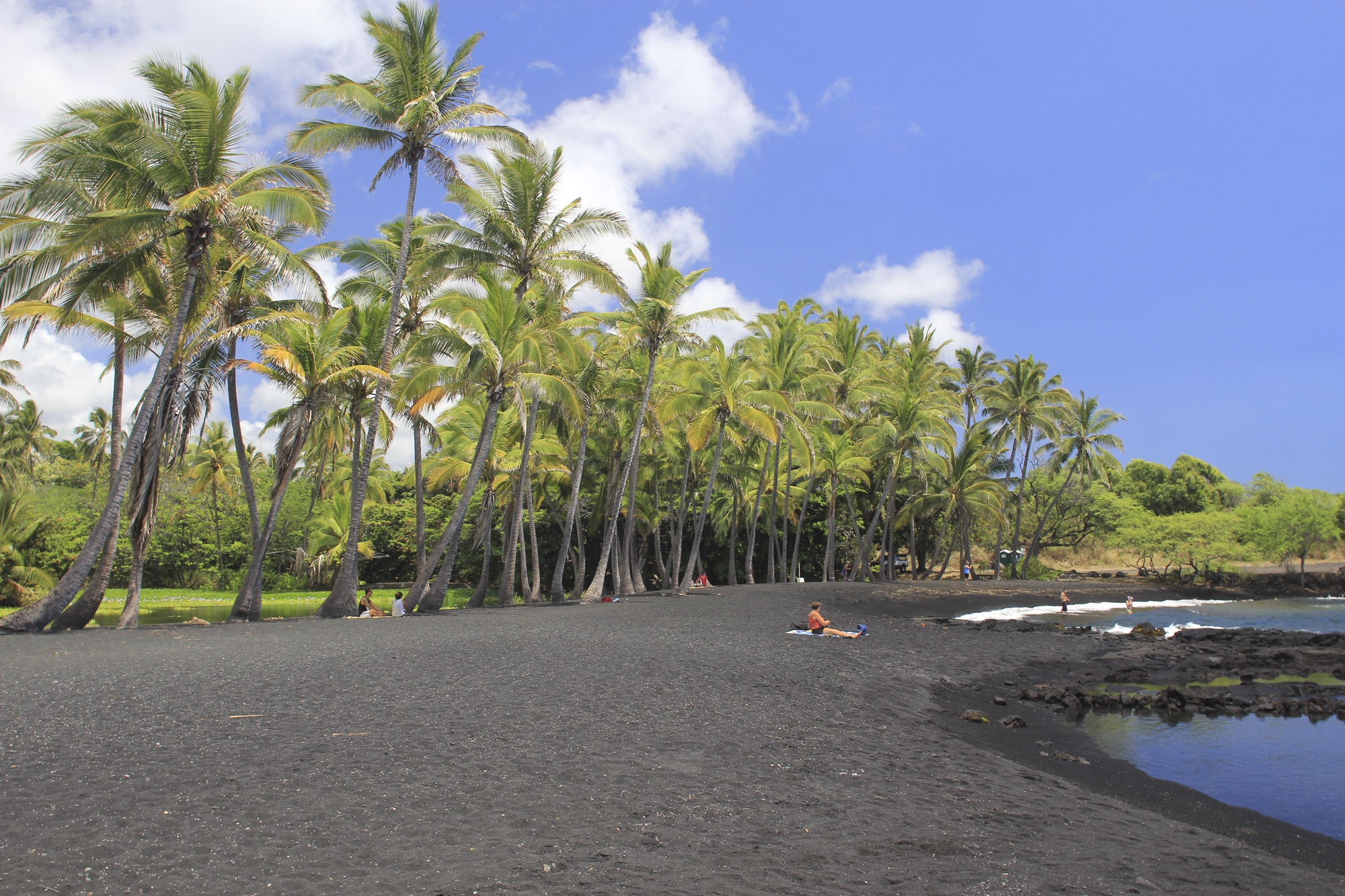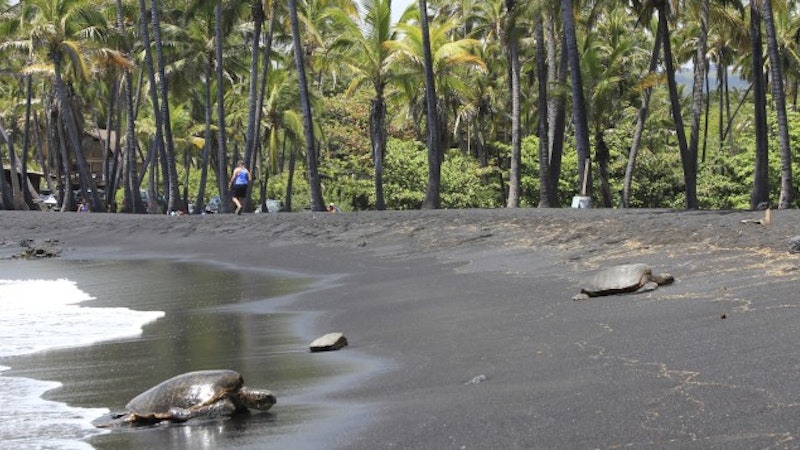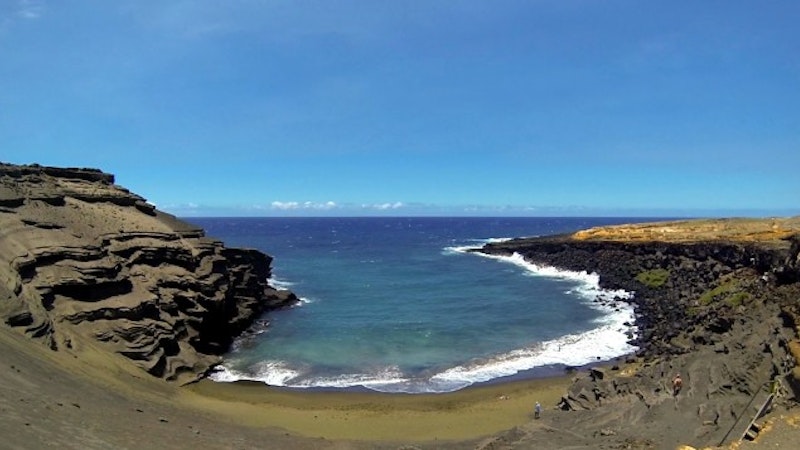Did you know that the sand on Hawaii beaches can be white, yellow, black, red, or even green? Yep, just like the rainbow you’ll see after a morning drizzle here in Hawaii, our sand can be just as colorful. But, to find it, you’ll need to know where to look.
Black Sand Beaches:
If you’re looking to sink your toes into a black sand beach, you have a few options. The Big Island, Maui, and Molokai all have black sand beaches.
Darcy Bevens at the Center for the Study of Active Volcanoes at the University of Hawaii at Hilo told the Associated Press that black sand beaches are formed “when hot molten lava enters the cold ocean and is immediately quenched to solid glass, then shatters from the resulting steam.”
According to the Associated Press, a new black-sand beach was formed on the eastern shores of the Big Island after lava from the Kilauea volcano engulfed the town of Kalapana in 1990, destroying most of the homes. The molten lava also filled in Kaimu Bay, covered the beach that was there, and extended the shoreline, creating a new beach about a half-mile from the original. And, it’s interesting to note that the beach is younger than many of its visitors!
The new Kaimu Beach is at the end of Highway 130, past Pahoa town, where the road meets Highway 137.
Red Sand Beaches:
Kaihalulu Bay on Maui near the town of Hana is home to a unique red sand beach. Towering red cinder cliffs surround the bay, and the blue ocean swirls along the red sandy shore. A large lava rock reef juts out in the bay slightly protecting the beach from harsh waves, but swimming is not advised. There are no lifeguards and ocean conditions are unpredictable. When you book a Maui Spectacular Helicopter Tour through Hawaii Aloha Travel, you’ll even fly over Western Maui, Haleakala, and Hana, near the red sand beach.
Why is the beach red? The cindercone behind the beach erodes constantly, which continually enlarges the cove. This hill is rich in iron, and is why the beach’s sand is such a deep red.
Green Sand Beaches:
On the Big Island is the Papakolea green sand beach, surrounded by olive-colored cliffs and crashing surf. Olivine crystals eroding from an ancient volcanic cinder cone give Papakolea its hue.
Papakolea Beach is located near the Big Island’s southernmost point. According to the Associated Press, you’ll have to shimmy down the side of the cinder cone on a worn trail to the beach. The sand itself is not as vibrant as some patches of green you’ll find outside on the trail leading to the beach. There are no lifeguards, so swim with caution.
To get there, drive to the end of South Point Road via Highway 11 to a dirt parking lot. From there’s it’s an hour hike (each way) through a lava field to a worn dirt road to the beach. Sturdy shoes and drinking water are essential. The route offers scenic views, ancient Hawaiian structures and patches of emerald green sand.
Who says you should spend all your time on a white- or golden-sand beach? Expand your horizons and check-out these colorful beaches, instead!






